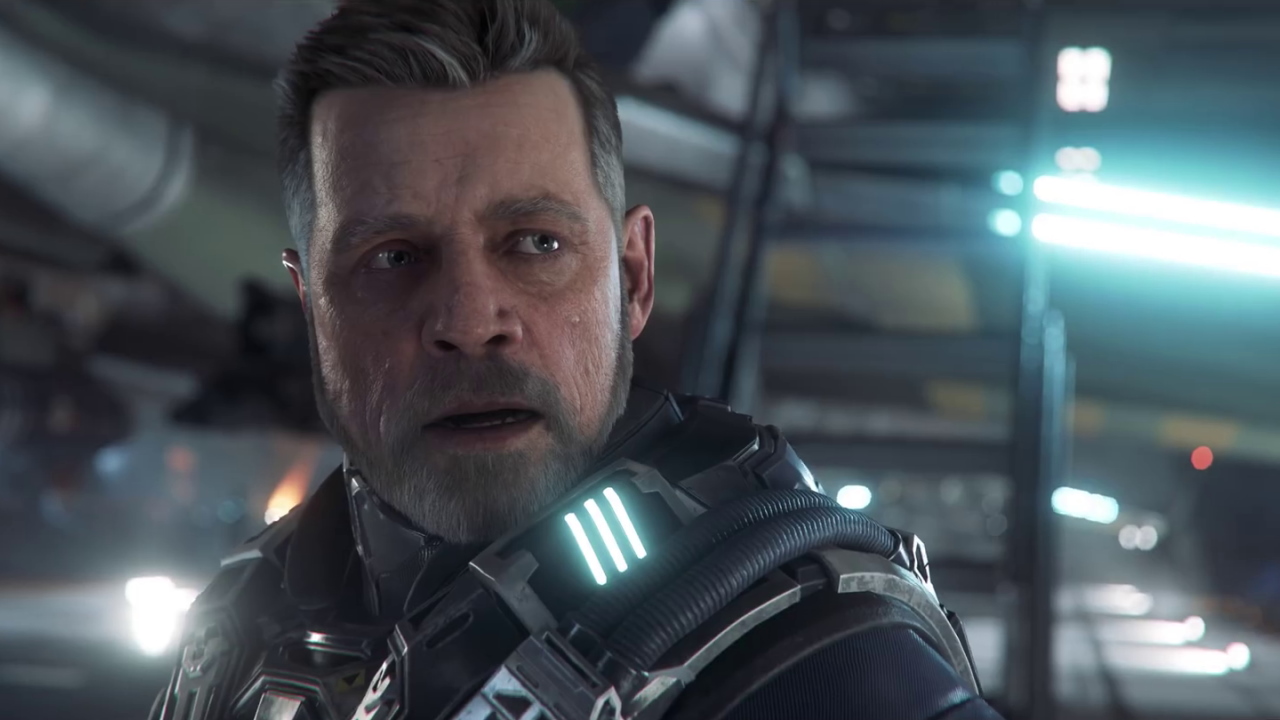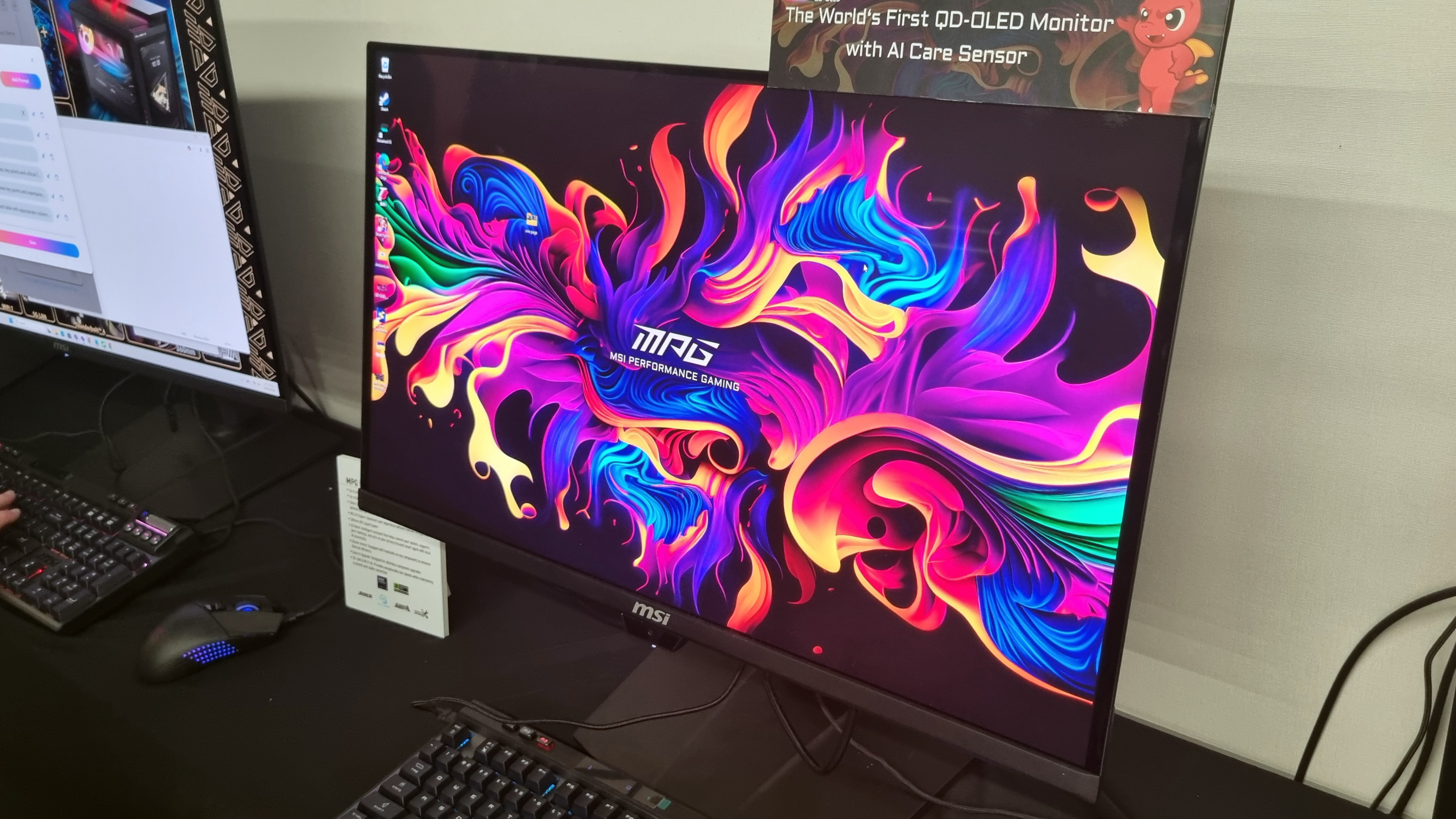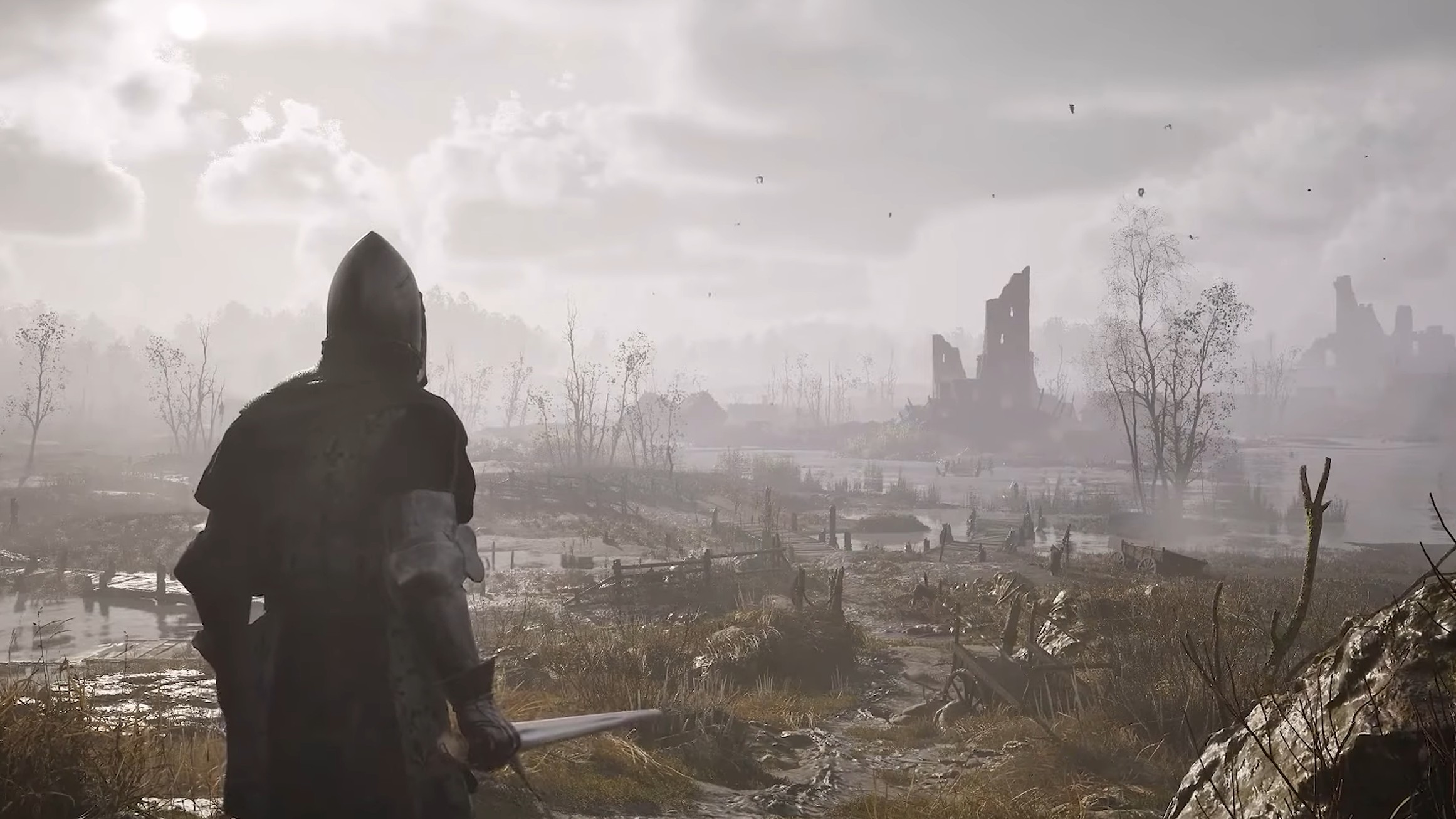
Funko Fusion Review
At this point it almost seems that licensed Funko Pop figurines are being birthed into the world at a greater rate than actual human babies, so it makes sense that someone finally scooped up a bunch of these block-headed bookshelf warmers and stuck them in their own video game. Funko Fusion structures its campaign around seven beloved TV shows and films, including Masters of the Universe and Jurassic World, and stuffs it with iconic pop culture cameos from everyone from Marty McFly to Mega Man. However, despite the fact it certainly appears faithful to the distinctive Funko style at first glance, its meaningless story, mind-numbingly repetitive mission design, and maddening game-breaking bugs cause the whole thing to topple over like a doll with a head that’s too big for its body.
Effectively a third-person shooter spin on the tried-and-tested LEGO videogame formula (à la LEGO Star Wars: The Skywalker Saga) right down to the way literally every object around you can be belligerently smashed into studs – sorry, chunks of vinyl – Funko Fusion’s eclectic handful of familiar stories can be played in any order. I opted to open with Hot Fuzz and close with Scott Pilgrim vs The World, but the sequence I chose didn’t really seem to have any impact on the paper-thin overarching storyline, which centres around a good-versus-evil battle between Funko Freddy and the evil Eddy Funko. These two Funko faces may be familiar to the more dedicated Funko collectors, but from where I’m sitting having owned just a handful of them, the less said about these thoroughly uninteresting and underdeveloped arch rivals, the better.
Each substory runs for five stages and gives you four characters to switch between. In some cases there’s a strong incentive to do so, particularly in The Umbrella Academy where I found myself using Allison to persuade certain vulnerable NPCs to do her bidding and then swapping to Number Five for his ability to blink through the air to otherwise out of reach areas, but more often than not there’s not too much discernable difference between each character other than basic attributes, such as the rate of fire of their weaponry.
Across each of the seven substories, levels typically rehash the same escort missions and fetch quest formats, and also tend to copy and paste encounters to artificially lengthen each stage to frankly offensive degrees – like the Scott Pilgrim vs The World encounter that forced me to fight the same few variations of a cloned stunt double enemy in three or four near-identical scraps in a row. This is before each substory culminates in a boss fight that is each structured in the same enormously unsatisfying way, where you must blast purple blobs off a big bad’s body while fending off its crowding minions until you have enough purple goo to fill a towering Funko flask. At this point you can trigger the arrival of a super-sized Pop, like Battle Cat or a T-Rex, to finish the monster off while you shoot vinyl chunks out of its body on autopilot and try not to look bored until the cutscene comes.
I found combat in general to be pretty arduous for the most part.
In fact, I found combat in general to be pretty arduous for the most part. At first it feels satisfying enough to Funko pop the enemy Funko heads off their little Funko shoulders, but it quickly becomes tedious as you plough through these big-headed hordes in waves that are limited at certain times, and annoyingly neverending in others. The only substantial difference to each encounter is that some enemies you need to shoot, some you need to whack with your sword, and some you need to shoot until they’re stunned so that you can whack them with your sword. It gets old pretty Funko fast.
Puzzle solving fares a little better, at least in parts. There’s still plenty of basic timed switch-shooting and crank wheel-turning to be done, but there are some standout moments like the portal-heavy He-Man sections and using guitar amps to blast through fragmented glass windows in Scott Pilgrim vs. The World. That is, provided these puzzles work as they should – but more on that later.
Vinyl Fantasy
Credit where it is due, the team at developer 1010 Games has done an admirable job at recreating the super deformed vinyl idols and placing them in some attractive little toy towns to roam around in. I was initially delighted to follow that meddling swan through the quaint village streets of Sandford when I started the Hot Fuzz campaign, and round up the huskies scattered amidst the cold steel surfaces of Thule Station in the Antarctic surrounds of John Carpenter’s The Thing. A vibrant bowling alley battle in The Umbrella Academy was particularly dazzling (even though that’s the series here I’m least personally familiar with) and the swirling cartoon explosions in Masters of the Universe’s Eternia were also a welcome touch. There’s clearly been a lot of work poured into crafting the look and feel of Funko Fusion, and plenty of Easter eggs to hunt for in its various worlds, too.
Yet while Funko Fusion is absolutely teeming with recognisable characters and locations, it possesses surprisingly little of its own personality. Whereas I’ve regularly chuckled through the likes of LEGO Star Wars: The Skywalker Saga or LEGO Marvel Super Heroes in the past as a result of the many clever comedic touches they bring to each adventure, I can recall laughing at Funko Fusion precisely once during its entire campaign – when the Cylons from Battlestar Galactica nod in approval at Knight Rider’s KITT after noticing the strobing red light on its grill mirrors the one on their visor lenses. For the most part, the absence of character voices and complete lack of facial expressions makes it very hard for these figurine fighters to seem like anything but charmless empty vessels in place of where some of my favourite fictional characters should be. When Adam raises the Power Sword with a completely nonplussed look on his face, it’s the accompanying He-Man theme song that’s really doing all the heavy lifting.
Mission objectives are incredibly obtuse and lack signposting.
Outside of the odd static speech bubble its cast of characters don’t really speak at all, and Funko Fusion itself is equally poor when it comes to communication. Mission objectives are often incredibly obtuse and lacking in any signposting. This often led to copious amounts of backtracking, especially since some of its environments, like the Jurassic World shopping district, are quite sizeable, yet you’ve got no minimap to assist in navigating them. I found myself routinely retracing my steps purely in order to find one of the vending machines to craft health potions and bits of puzzle-solving equipment like jump pads and gas cannisters with. In fact, I think I visited more virtual vending machines in Funko Fusion than I have in every Like a Dragon game combined. It’s also a little annoying that to change character you have to schlep all the way back to find a Funko Pop display box – I don’t see why we couldn’t have been given a menu button to just swap characters on the fly with.
It’s also not particularly good at giving feedback as to why some of your shots inflict damage on larger enemies and others don’t. I spent ages blazing away at the glowing red weak spot on the back of a big samurai mini-boss in The Umbrella Academy, continually registering as ineffective red X’s onscreen, only for it to suddenly change to hit point numbers flying off him with zero change in my approach. That was baffling, and not the only case of this unintuitive quirk with Funko Fusion’s combat.
Worse still, Funko Fusion doesn’t make it clear early on that you need 45 golden crowns in order to unlock its final story battle. After completing the seven main story quests, I had only accrued 38 of them, which meant that I had to turn heel and go back through levels I’d already completed searching for special cameo quests to harvest the extra crowns from, which put my story progress on pause for a full three hours. Then, when I did trigger the final encounter, I was forced to slog through an overly long final boss fight that had the audacity to make me pump round after round into its eight different forms for around 45 minutes before cutting to an unexpected and entirely anticlimactic endgame cutscene that closed the story with less of a Funko Pop and more of a burst bubble.
Arriving just a week after the launch of Astro Bot, a masterfully crafted adventure overflowing with invention and playful surprises at every turn, Funko Fusion’s rigid adherence to backtracking, bog-standard escort missions, plodding horde mode blast-a-thons, and bullet-spongey boss fights makes it seem instantly and disappointingly out of date by comparison. That’s to say nothing of the absolutely obnoxious invisible walls that make exploring its environments regularly mystifying, if not downright irritating. Just because you can use a jump pad to successfully leap above the height of a gate that’s blocking your path in the Shaun of the Dead bonus stage, doesn’t mean that Funko Fusion is going to allow you to clear it. What’s the matter, Funko Fusion? Never taken a shortcut before?
Go Funk Yourself
While most serious collectors like to keep their Funko Pops pristine, Funko Fusion has unfortunately arrived in stores a bit box-damaged, at least if the launch PlayStation 5 version that I played is anything to go by. In addition to relatively minor presentational problems like cutscenes freezing while the audio continued to play or background music just dropping out entirely for long stretches of a level, I’ve had puzzles break and prevent me from progressing, vending machine screens freeze up and not let me leave, and multiple crashes during boss fight loading screens, among many other annoyances.
At one point in a Masters of the Universe stage I needed two portals in order to solve a certain puzzle, however after crafting the first portal I was told by the vending machine that it was out of stock. After trying for about half an hour in vain to somehow solve the puzzle using just one portal, I ended up restarting the level only to find there were now multiple portals available, which was utterly infuriating. During the aforementioned Shaun of the Dead-based level, I was completely baffled as to why the car I was escorting just completely refused to move while I was bombarded with endless waves of zombies, only to eventually determine that a zombie had glitched inside a piece of scenery within the danger radius of the car, which was preventing it from getting a move on. Naturally, it was aggravatingly immune to my attacks and the level had to be restarted from the beginning.
A lack of checkpoints makes game-breaking bugs hard to bear.
What makes a lot of these game-breaking bugs particularly hard to bear is the lack of any checkpoints in each chapter. If you meet a progress-halting glitch or even just lose your three lives towards the end of a stage, then you have to start that chapter all over again. Of the 20 hours it took me to complete Funko Fusion’s story, I’d estimate that close to a quarter of that time was just me redoing the levels that managed to break during my first time through.
The developers have assured me that they’re working on patch fixes to remedy some of the issues I encountered during my playthrough, yet even with these rough edges smoothed out, I can’t really see Funko Fusion appealing to any particular audience because it’s so hard to figure out exactly who it’s intended for. Its button-mashy combat and cutesy characters make it seem like it’s targeted towards more junior players, but some of its most prominently featured licenses like Hot Fuzz and The Thing makes it seem far more skewed towards adults who’ve actually seen those mature movies.
Unlike the LEGO video games that typically take the darker moments of Harry Potter or Star Wars and spin them into a cheeky moment of slapstick, Funko Fusion just presents the grisliest moments of these licenses, more or less as-is. The villainous Simon Skinner impales himself on a miniature church steeple at the end of Hot Fuzz, while Copper’s hands get violently bitten off by Norris’ teeth-filled torso in The Thing. The only difference is that they’re dead-eyed doll versions of these well-known characters, but the blood still sprays the same – which doesn’t exactly seem appealing for youngsters. Additionally, I don’t know too many grade school kids who are into the 2004 Battlestar Galactica, let alone the 1978 original which has been curiously reproduced here.
The absence of any cooperative play at launch means Funko Fusion can’t even be tag-teamed by a parent and a child, which is how I’ve enjoyed many of the LEGO games with my kids in the past. While co-op functionality is promised to be rolled out in piecemeal, starting with Jurassic World in October, according to the developers it will be online-only and therefore won’t facilitate families playing it on the couch together anyway. I’m really struggling to figure out exactly who Funko Fusion is for, but what I do know for certain is that it’s definitely not for me.








